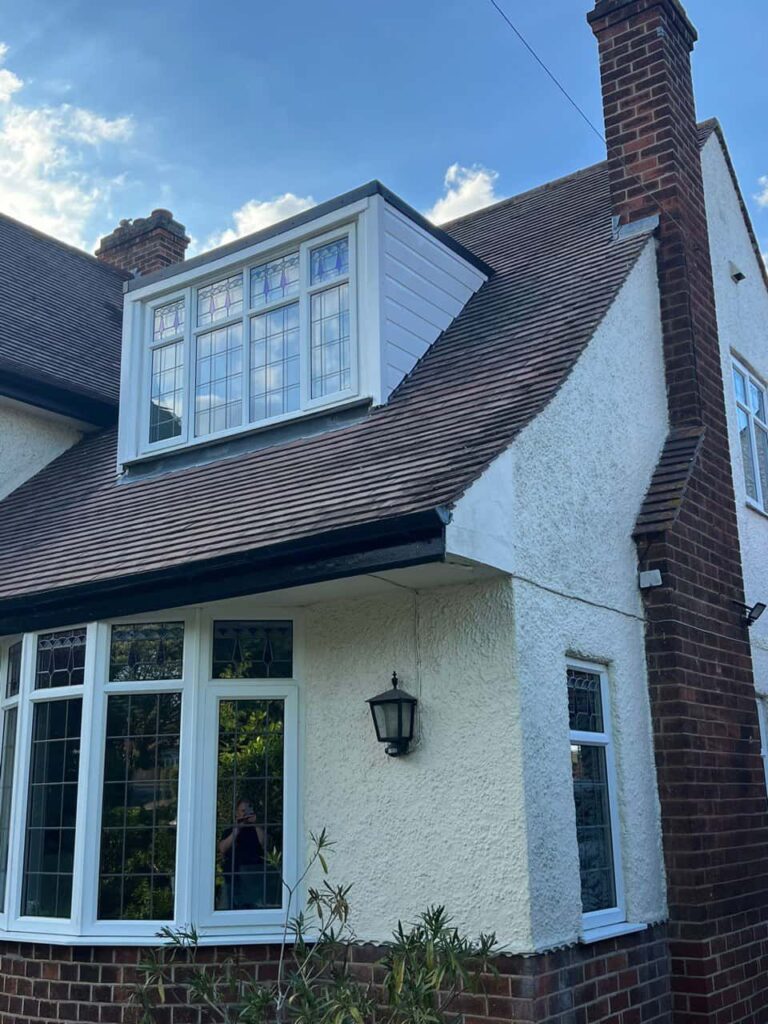Felt roofs, commonly used for flat or low-pitched roofs, are known for their affordability and ease of installation. However, like any roofing material, felt roofs are susceptible to deterioration over time, especially when exposed to the elements. Understanding the science behind this deterioration can help homeowners take the necessary steps to maintain their roofs and avoid costly repairs. At West Bridgford Roofing Repairs, we specialise in providing professional felt roof repair services across West Bridgford, Nottingham. In this blog, we’ll explore the factors that cause felt roof deterioration and the most effective repair solutions.
The Science Behind Felt Roof Deterioration
Felt roofing material is composed of layers of bitumen (asphalt) and fibrous materials, usually reinforced with polyester or fibreglass. These layers create a durable, waterproof barrier that protects flat roofs from water ingress. However, exposure to environmental factors over time can lead to the degradation of these materials.
1. UV Radiation
One of the primary causes of felt roof deterioration is prolonged exposure to ultraviolet (UV) radiation from the sun. UV rays break down the bitumen in felt roofing, causing it to become brittle and crack. Over time, this weakens the roof’s ability to remain waterproof, increasing the risk of leaks.
2. Temperature Fluctuations
Felt roofs expand and contract with changes in temperature. In colder weather, the material contracts, and in warmer weather, it expands. These constant fluctuations can lead to the formation of cracks and splits in the felt. Over time, these small cracks can worsen, allowing water to penetrate the roof and cause further damage.
3. Standing Water
Flat roofs, including those covered with felt, are particularly vulnerable to water pooling if the roof is not properly sloped for drainage. Standing water can weaken the felt material and create areas of increased stress. Over time, water can seep through weak points, leading to leaks and damage to the underlying structure.
4. Mechanical Damage
Foot traffic, falling debris, and general wear and tear can cause physical damage to a felt roof. While felt roofs are durable, they can be easily punctured or torn, especially if the roof is walked on frequently or if sharp objects are dropped on the surface.
5. Ageing
As with any roofing material, felt roofs naturally degrade over time. As the roof ages, the bitumen loses its flexibility, making it more susceptible to cracking and blistering. Most felt roofs have a lifespan of around 10-20 years, depending on the quality of installation and the level of maintenance they receive.
Effective Repair Solutions for Felt Roofs
If you notice signs of deterioration in your felt roof, such as cracks, leaks, or blistering, it’s essential to address these issues promptly to prevent further damage. Here are some of the most effective repair solutions:
1. Patch Repairs
For minor issues such as small cracks or tears, patch repairs are a cost-effective and efficient solution. This involves applying a new layer of felt or bitumen over the damaged area to seal any gaps and restore the roof’s waterproofing capabilities. Patch repairs are particularly effective for localised damage and can extend the life of your roof.
At West Bridgford Roofing Repairs, we use high-quality materials for patch repairs, ensuring that the fix is durable and long-lasting.
2. Resurfacing
If a large portion of the felt roof is showing signs of wear, resurfacing may be the best solution. This involves adding a new layer of felt over the existing roof, providing a fresh, protective surface without the need for a full replacement. Resurfacing can effectively seal cracks, improve the roof’s resistance to UV radiation, and enhance its overall durability.
3. Full Roof Replacement
In cases where the felt roof has reached the end of its lifespan or has suffered extensive damage, a full roof replacement may be necessary. While this is a more significant investment, replacing the entire felt roof ensures that the underlying structure is protected, and it provides peace of mind knowing that the roof is in optimal condition.
At West Bridgford Roofing Repairs, we offer full felt roof replacements, using the latest materials and installation techniques to provide long-term protection for your property.
4. Improving Drainage
To prevent standing water from damaging your felt roof, it’s important to ensure that the roof is properly sloped and that drainage systems are functioning correctly. In some cases, additional drains or outlets may be needed to improve water runoff. This can significantly reduce the risk of water pooling and subsequent roof deterioration.
Our team at West Bridgford Roofing Repairs can assess your roof’s drainage system and recommend improvements to protect your felt roof from future water damage.
5. Applying Protective Coatings
One way to extend the lifespan of a felt roof is by applying a protective coating, such as a reflective or waterproof sealant. These coatings help shield the felt from UV rays, reduce the impact of temperature fluctuations, and improve the roof’s overall resistance to water penetration. Applying a protective coating can delay the need for major repairs or replacement.
Conclusion
Felt roofs, while durable and cost-effective, are still vulnerable to deterioration over time due to environmental factors and physical wear. By understanding the science behind felt roof degradation, homeowners can take proactive steps to maintain their roofs and address any issues before they escalate. Whether it’s a simple patch repair, resurfacing, or a full roof replacement, the team at West Bridgford Roofing Repairs is here to help.
Call us on: 0115 647 1193
Click here to find out more about West Bridgford Roofing Repairs
Click here to complete our contact form and see how we can help with your roofing needs.

